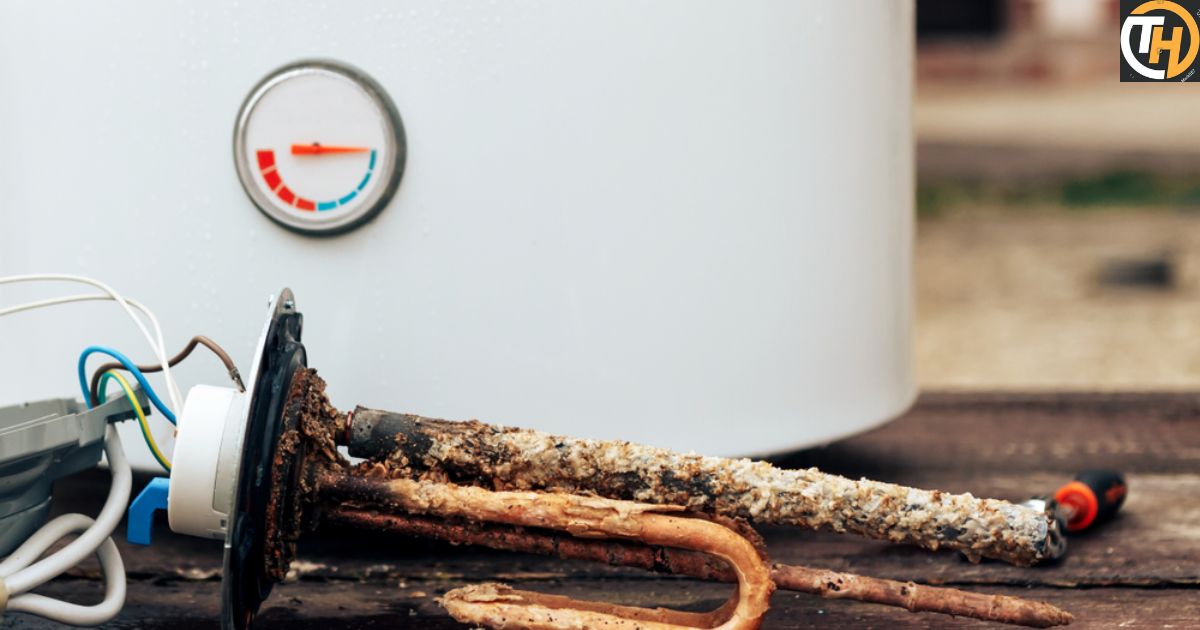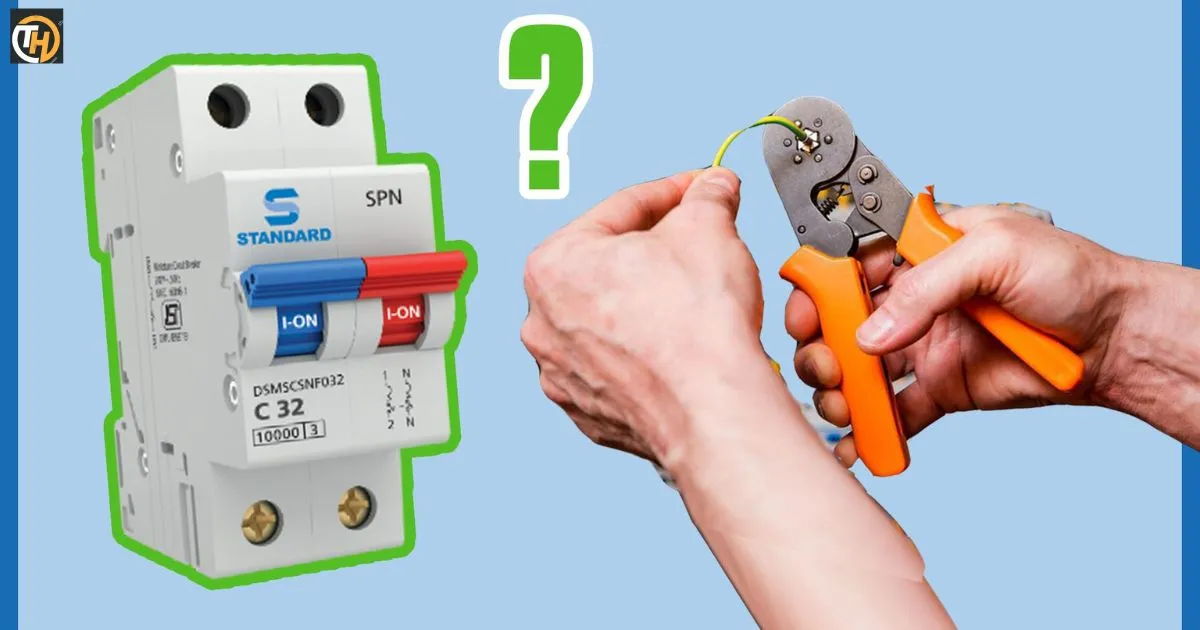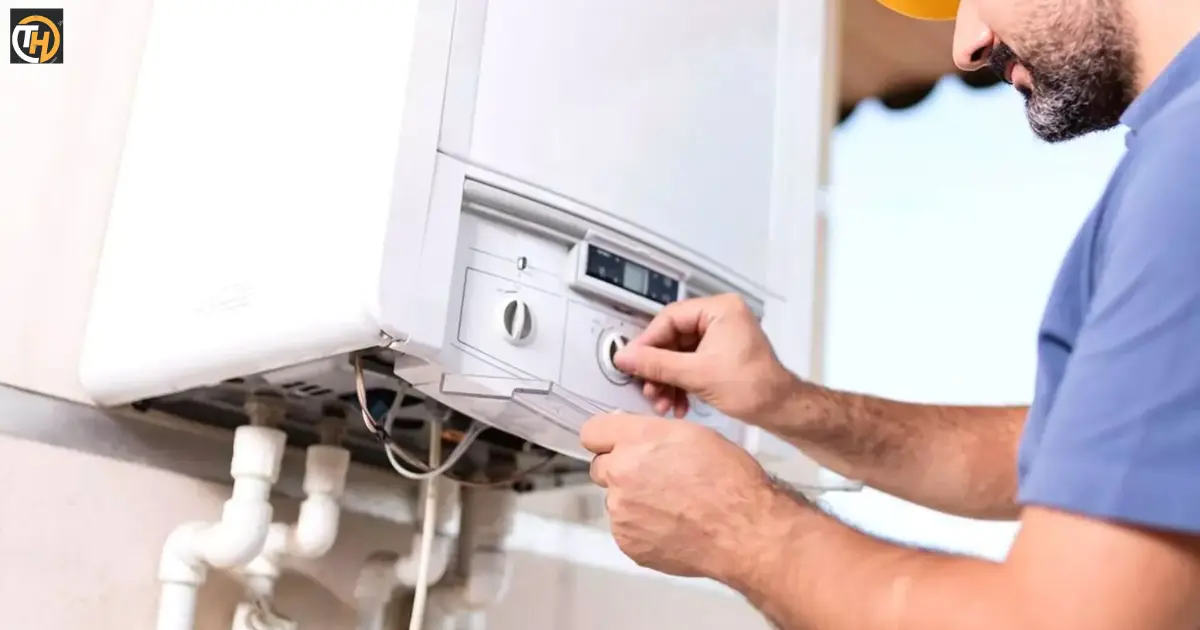Ensuring your hot water heater is operating efficiently is crucial for a comfortable living environment. To tell if a hot water heater is on, check for warm water flow from taps and listen for operational sounds. A well-maintained water heater ensures a consistent supply of hot water for bathing, cooking, and heating, supporting your daily needs.
Imagine it’s a chilly winter morning and you’re about to take a shower. You turn on the faucet and wait for the water to heat up. But how do you know if your water heater is working properly? That’s where understanding your water heater comes in handy.
There are several ways to tell if a hot water heater is on. The simplest method is to turn on a hot water tap and wait for a few minutes. If the water heats up, then the heater is working. Another way is to check the heater itself. Most water heaters have an indicator light or a display that shows whether they are on or off.
Common Water Heater Problems
When it comes to your water heater, various issues can arise that may disrupt its functionality. Understanding these common problems is crucial for prompt identification and effective resolution.
Hot Water Heater Leaks
One of the most prevalent issues with water heaters is leaks. Leaks can occur for various reasons, such as a damaged tank or a faulty pressure relief valve. Identifying and addressing these leaks promptly is essential to prevent water damage and maintain the efficiency of your water heating system.
Slow Heating Process or Aging Coils
If you find that your water heater takes an unusually long time to heat the water or notice a decline in its heating efficiency, aging coils may be the culprit. Over time, the heating elements in the water heater can wear out, affecting the heating process. Regular maintenance and timely replacement of aging coils can help restore optimal performance.
Rusty Water Takes a Toll

The presence of rusty or discolored water coming from your hot water tap can be alarming. This issue often indicates corrosion within the water heater tank. Corrosion can compromise the integrity of the tank, leading to leaks and other problems.
Addressing rusty water promptly is crucial to prevent further damage and ensure the longevity of your water heater.
Slow or Low Water Flow
Another common issue is slow or low water flow from the hot water tap. This can be caused by sediment buildup in the tank, reducing the efficiency of the heating elements. Regular flushing of the water heater tank can help prevent sediment accumulation and maintain optimal water flow.
When Your Water Heater Won’t Turn On
Experiencing difficulties in turning on your water heater, especially when wondering, “How can I tell if a hot water heater is on?” can be frustrating. This issue may be linked to thermostat, pilot light, or electrical component issues. Diagnosing the specific cause is vital for effective troubleshooting and restoring your water heater’s functionality.
Why Hot Water Heater Safety Matters
Ensuring the safety of your hot water heater is paramount. From preventing potential hazards like leaks and electrical issues to maintaining the correct water temperature, prioritizing safety measures can safeguard your home and its occupants. Regular inspections and adherence to safety guidelines are crucial aspects of responsible water heater ownership.
We Specialize in Water Heating Malfunctions
If you’re wondering how to tell if a hot water heater is on, rely on our specialized services. Our experienced professionals diagnose and resolve water heater issues promptly, ensuring your system operates efficiently and reliably.
Ensuring Hot Water Heater Functionality: A Comprehensive Inspection Guide
Turn on a Faucet
Turning on a faucet is the quickest way to determine if a hot water heater is functioning properly. Within a few minutes, the water should become hot. If it remains lukewarm or doesn’t heat up at all, it could indicate an issue with the heater.
When troubleshooting, it’s essential to consider various factors that might affect water temperature, such as the distance from the heater to the faucet and the plumbing system. If the water consistently fails to reach the desired temperature, further investigation is warranted.
Check the Pilot Light
For gas water heaters, checking the pilot light is a crucial step in diagnosing potential problems. Open the access door to the burner chamber and inspect the pilot light tube. A steady blue flame indicates that the pilot light is working correctly. If the flame is flickering or absent, it suggests a malfunction that needs attention.
Understanding if a hot water heater is on can be determined by inspecting the pilot light. Regularly checking the pilot light’s condition is crucial for ensuring the continuous and efficient operation of the water heater, providing valuable insights into the ignition system and gas supply.
Check the Status Light
Many modern water heaters come equipped with a status light that provides a quick indication of the system’s health. The status light typically signals whether the heater is functioning as intended or if there’s an issue that requires troubleshooting. A steady green light often indicates normal operation, while a flashing or red light may signify a problem.
Interpreting the status light correctly allows homeowners to promptly address potential issues, preventing more significant malfunctions and ensuring the longevity of the water heater.
Check the Circuit Breaker

For electric water heaters, the circuit breaker plays a pivotal role in powering the unit. If the water isn’t heating properly, inspect the circuit breaker labeled “Water Heater.” If it’s in the off position, flipping it to the on position may resolve the problem.
However, if the breaker continues to trip, it could be indicative of an electrical issue that requires professional attention.
Understanding the electrical components of the water heater ensures a safe and reliable operation, reducing the risk of malfunctions and ensuring a consistent hot water supply.
Check the Power Isolator
In the case of hot water cylinders, a power isolator located beside the cylinder regulates the unit’s electricity supply. If the water heater isn’t working, ensure that the power isolator is turned on. This simple check helps rule out power supply issues and directs attention to other potential causes of malfunction.
Regularly verifying the power isolator’s status is a proactive measure to maintain the water heater’s functionality and prevent disruptions in the hot water supply.
Other Signs of Heater Issues
Apart from specific diagnostic checks, there are other signs that may indicate a hot water heater isn’t operating optimally. If the water is consistently too hot or fails to reach the desired temperature, it could point to thermostat problems.
Understanding these additional indicators allows homeowners to address issues promptly and avoid prolonged periods without reliable hot water.
Heater Runtime Considerations
Knowing the average runtime of a water heater is essential for managing energy consumption and identifying irregularities. The duration a water heater runs daily varies based on its type.
New tankless water heaters, for instance, typically run for one to two hours, while older tank-style heaters may operate for five hours or more.
Monitoring runtime patterns assists in identifying deviations and potential efficiency issues, prompting timely maintenance or replacement decisions.
Signs Your Hot Water Heater is Operating
- Unmistakable Warmth Around the Heater: If you experience a gentle touch around the hot water heater and feel a slight warmth, it indicates that the heater is actively heating water.
- Audible Hum or Whirring: A subtle hum or whirring sound from the heater is a clear sign that the heating elements are at work.
- Visible Pilot Light:
- For gas water heaters, the presence of a visible pilot light is a clear indicator that the heater is operational, helping you tell if a hot water heater is on.
- Temperature Dial Setting: If you adjust the temperature dial slightly and wait, and the water temperature changes accordingly, your heater is indeed on.
- Water Temperature at Faucet: Turning on a hot water faucet and having the water reach the desired temperature promptly indicates your hot water heater is functioning.
- Regular Hot Water Availability: Consistent access to hot water when needed is a clear indicator of a well-operating water heater.
- Energy Consumption Spike: Monitor your energy consumption. An increase when hot water is in use suggests the heater is actively heating.
- Digital Display Confirmation: If your heater has a digital display, look for indications of heating activity or temperature adjustments.
- Thermostat Activation: The thermostat should click on when the water temperature drops, signaling the heater to start working.
- Water Heater Rumbling: A subtle rumbling noise during heating cycles confirms the water heater is in operation.
- Condensation Around the Tank: Condensation on the tank exterior indicates a temperature difference, highlighting an active heating process.
- Regular Maintenance Schedule: A well-maintained heater is likely to function optimally. Regular maintenance ensures it stays in top condition.
- No Error Codes: Check for any error codes on digital displays. The absence of codes suggests normal operation.
Here’s a table summarizing the key points and purposes of the article:
| Key Point | Description |
| Turn on a Faucet | Quickly assess the functionality of a hot water heater by turning on a faucet. If the water fails to heat within a few minutes, it may indicate a problem with the heater that requires further investigation. |
| Check the Pilot Light | For gas water heaters, inspecting the pilot light is crucial. A steady blue flame signifies proper operation while flickering or the absence of the flame indicates a malfunction that needs attention. |
| Check the Status Light | Modern water heaters often feature a status light. Interpret the light’s signals to determine if the heater is working correctly. Different light patterns indicate normal operation or potential issues. |
| Check the Circuit Breaker | In electric water heaters, a malfunction may be due to a tripped circuit breaker. Ensure the breaker labeled “Water Heater” is on. |
| Check the Power Isolator | For hot water cylinders, verify that the power isolator is turned on. This helps rule out power supply issues and directs attention to other potential causes of malfunction. |
| Other Signs of Heater Issues | Be aware of additional signs such as consistently too hot or cold water, which may indicate thermostat problems. |
| Heater Runtime Considerations | Understand the average runtime of different water heater types to manage energy consumption effectively. |
FAQs
Q: How often should I check my hot water heater?
A: It’s advisable to perform a quick check monthly and a more thorough inspection every six months.
Q: Can a malfunctioning heater be repaired at home?
A: Minor issues like pilot light outages can be fixed at home, but for major problems, professional assistance is recommended.
Q: Is it normal for a water heater to make noise?
A: Some sounds, like rumbling during heating cycles, are normal. However, loud or persistent noises may indicate an issue.
Q: What should I do if my hot water heater isn’t working?
A: Check for obvious issues like a tripped circuit breaker or a pilot light outage. If these are fine, consult a professional.
Q: Does the age of the water heater affect its efficiency?
A: Yes, older heaters may be less efficient. Consider replacement if yours is nearing the end of its expected lifespan.
Q: Are tankless water heaters easier to diagnose?
A: While they have fewer components, diagnosing issues with tankless heaters may require professional expertise.
Conclusion
Understanding the signs of a working hot water heater is vital for a comfortable home. Regular checks and awareness of these indicators ensure your heater operates optimally, providing a reliable supply of hot water. By following the guidelines in this comprehensive guide, you can confidently assess whether your hot water heater is on and fulfilling its essential role.
Regular maintenance and checks can ensure its optimal functionality. Remember, if you’re unsure or if your heater isn’t working as expected, it’s always best to consult with a professional. Stay warm and stay safe!











